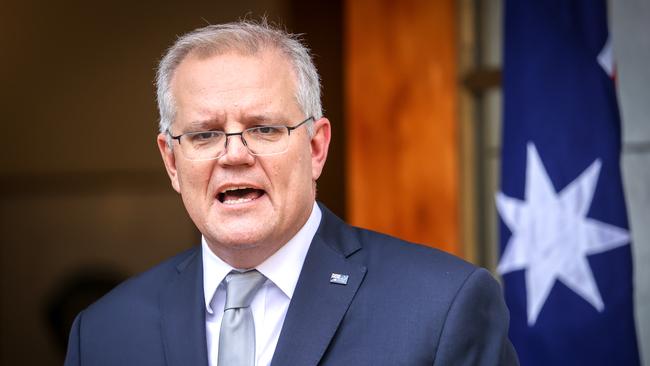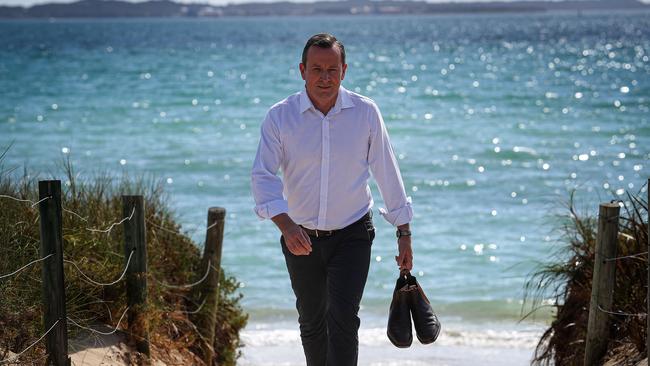Borders open by Christmas: Most states back new national laws
Prime Minister Scott Morrison has failed to convince Western Australia to join the rest of the country in committing to a national plan to reopen borders by Christmas.

NSW Coronavirus News
Don't miss out on the headlines from NSW Coronavirus News. Followed categories will be added to My News.
- Download our app and stay up to date anywhere, anytime
- Why Australia’s virus death toll surged
- Newtown bar, eastern suburbs gyms on COVID-19 warning list
Prime Minister Scott Morrison has failed to convince Western Australia to join the rest of the country in committing to a national plan to reopen borders by Christmas.
With cracks beginning to show in National Cabinet, the PM announced that state and territory leaders were no longer required to reach a consensus, as Western Australia refused to sign up.
Under the plan, seven of the eight jurisdictions reached an in-principle agreement to work on a consistent definition of a hotspot, paving the way for more localised lockdowns and the reopening of state borders by Christmas.

Under the guidelines a metropolitan area would be considered a “hotspot” — and therefore potentially subjected to restrictions — if it has 30 cases over three days, working out to be an average of 10 per day.
For regional areas the threshold is even lower, with just an average of three cases per day — or nine cases total over three days — considered a hotspot.
On Friday, Mr Morrison conceded the comprehensive document produced by the Australian Health Principal Protection Committee was only a “work in progress” as no states had signed on.
“It’s not the final … and there will be further discussion on how that can be more specifically defined,” he said.
“We have provided a clinically based, scientifically based definition of what a “hotspot” is in Australia,” he said.
“And where states are moving to make different decisions on different criteria, I think it’s only reasonable … that people understand why they would be taking a different assessment, and what medical advice that was based on.”
Mr Morrison also indicated the hotspot model would pave the way for a trans-Tasman travel bubble.
“I spoke to Prime Minister Ardern … and what I advised her was that Australia will be looking to apply the same hotspot approach to New Zealand,” he said.

Acting Chief Medical Officer Professor Kelly said the hotspot definitions were intended to bring “absolute clarity” to issues such as domestic border closures, adding there had been a lack of “transparency” from states to date.
“Part of that is the hotspot definition, but part of that is an understanding across borders that we can be sure of the information held on one side of the border (is) shared with another,” he said.
NSW Premier Gladys Berejiklian has urged her Queensland counterpart to “carefully consider” the impacts of border bans on both states.
She was especially concerned with construction, infrastructure, and tourism jobs and people with medical conditions.
